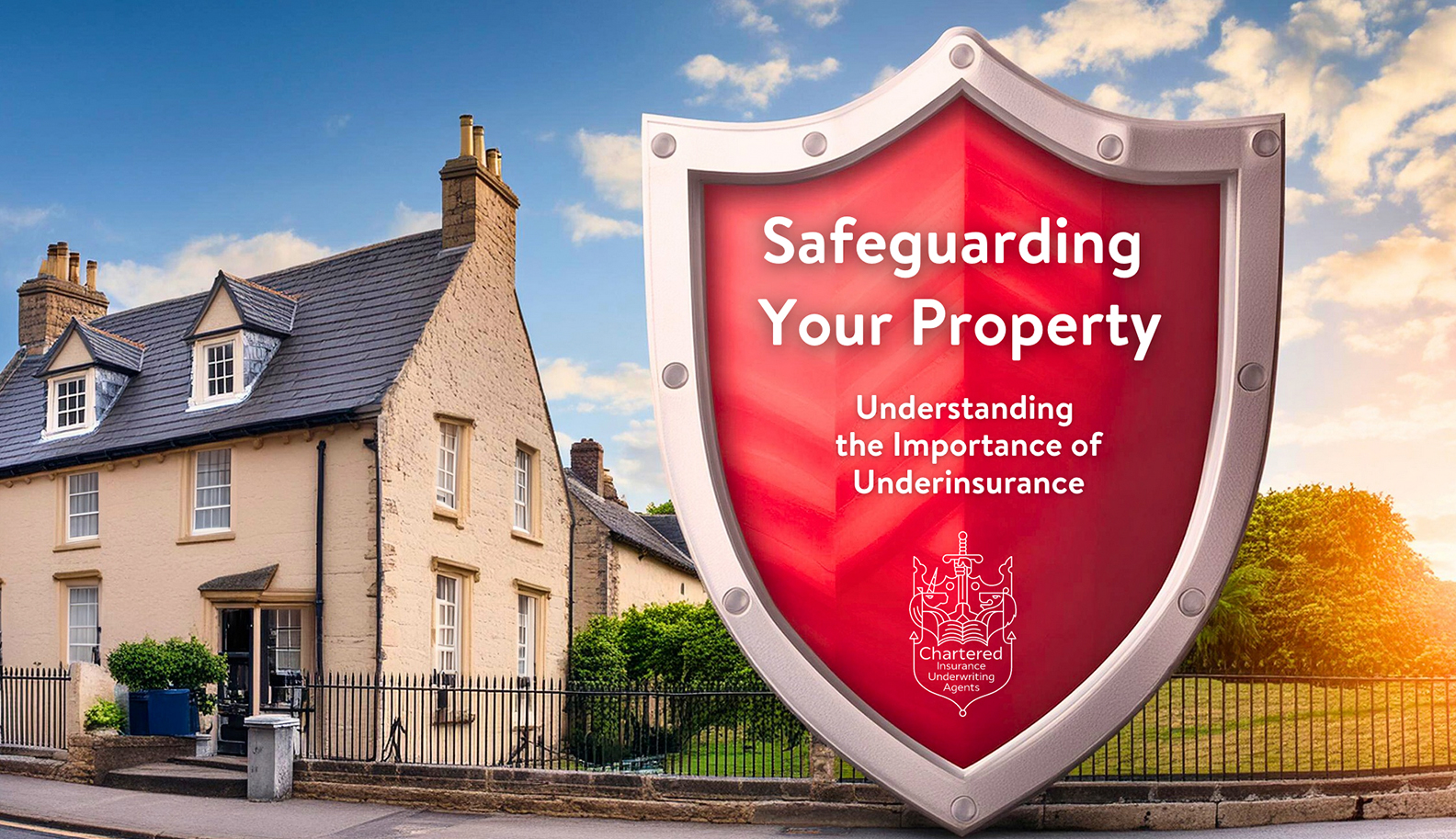When it comes to protecting your property, ensuring that your assets, including buildings, contents, and rental income, are adequately insured is not just important but crucial. Let’s take a closer look at building insurance as an example. It is essential that your sum insured accurately reflects the cost of completely rebuilding your home. This goes beyond just accounting for materials; it should also include professional fees such as architects and surveyors.

Did you know that 80% of UK properties are underinsured?*
The Significance of Accurate Sums: Avoiding Underinsurance
Ensuring that your sums are accurate is of utmost importance due to the potential risk of underinsurance. It’s worth noting that many insurance policies include an underinsurance clause known as ‘average.’ This clause stipulates that if you file a claim and your sums insured are insufficient, the amount you receive can be proportionately reduced. Therefore, getting your sums right is vital to avoid potential financial setbacks in the event of a claim.
Illustrating the Impact of Underinsurance: A Case Study
To better understand the repercussions of underinsurance, let’s look at a real-life scenario. Consider a medium-sized property constructed with brick walls and a pitched tiled roof. The sum insured for building coverage is set at £350,000. Unfortunately, a severe storm strikes, resulting in flooding that causes £60,000 worth of damage to the property. During the claim investigation, it is determined that the true rebuild cost of the property amounts to £500,000. This figure takes into account various factors, including the costs associated with rebuilding, demolition, pathways, professional fees, garden fencing, and statutory services. In this case, due to the property being underinsured, the principle of average would come into play. As a result, the claim payout would be proportionately reduced based on the ratio of the sum insured (£350,000) to the true rebuild cost (£500,000). This serves as a stark reminder of the importance of accurately assessing and insuring the full value of your property to avoid potential financial setbacks in the event of unforeseen circumstances.
The property was 30% Underinsured
In this particular case, it was determined that the property was underinsured by 30%. As a result, the average clause comes into effect, proportionately reducing the claims payment in accordance with the percentage of underinsurance. The initial claim was filed for £60,000. However, due to the underinsurance, the payment is reduced by 30% to £42,000. It’s important to note that the policyholder will be responsible for covering the difference of £18,000 in order to complete the necessary repairs. So we now see the implications that underinsurance can have on the financial burden placed on policyholders when unexpected events occur. Taking the time to accurately assess and insure the full value of your property is so important to avoid potential gaps in coverage and the need for out-of-pocket expenses in the event of a claim.
Reviewing Sums Insured and Considering External Factors
To maintain adequate cover, it is recommended to review your sums insured with your insurance adviser on an annual basis, particularly when your policy is up for renewal. However, it’s important to note that it’s not only during the renewal process that you should assess your coverage. External factors that could impact costs should be taken into consideration throughout the year. One way to determine accurate sums insured is by obtaining a professional assessment of your property. This can be done by engaging the services of an RICS-qualified surveyor who specialises in property valuations. They will provide an expert evaluation of the rebuild cost. It is recommended to have a professional survey done every 5 or so years.
Alternatively, you can use a rebuild calculation method to estimate your sums insured. This method involves considering various factors such as the size, construction materials, and specific features of your property to arrive at an appropriate coverage amount.
The Building Cost Information Service (BCIS) produces a range of detailed guidance on the cost of rebuilding houses and flats.
Be aware that for some insurers, and in particular if you are assessing high-value homes or specialist construction buildings, the BCIS calculator may not be appropriate, and you should seek a professional survey instead.
You can access the Rebuilding Cost Calculator by pressing the below link.
By regularly reviewing your sums insured and staying aware of external factors that may influence costs, you can ensure that your insurance coverage adequately reflects the current value of your property. This proactive approach will help you avoid potential gaps in coverage and financial losses in the event of a claim.
How this process could benefit brokers and their clients
For brokers, it helps maintain a strong professional reputation and builds trust with their clients. Brokers should advise a client to seek professional assessment through a survey and advise the current RICS indexation levels. By helping their clients obtain accurate and comprehensive cover, brokers can demonstrate their expertise and commitment to client satisfaction. This, in turn, can lead to client loyalty, positive referrals, and potential business growth.
For their clients, avoiding underinsurance is crucial for financial protection. Adequate coverage ensures that in the event of a claim, the policyholder will receive sufficient compensation to repair or replace damaged property. This helps prevent financial hardships and allows clients to recover and rebuild without significant out-of-pocket expenses.
*Source; New survey data from Rebuild Cost Assessment











